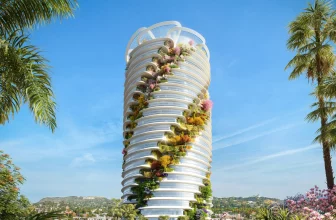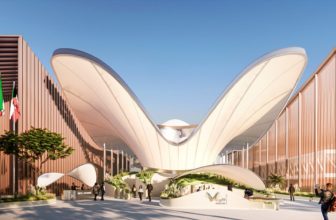To commemorate Paul Rudolph’s Centennial, The Paul Rudolph Heritage Foundation, a non-profit dedicated to preserving and maintaining the late master’s works, have held two exhibitions, namely Paul Rudolph: The Personal Laboratory at the Modulightor building, as well as Paul Rudolph: The Hong Kong Journey exhibition (from March 2) at the Center For Architecture.
The latter unveils “previously unseen drawings, sketches, and renderings” produced during Rudolph’s lesser-known career in Hong Kong, of the few Southeast Asian stops he ventured later in his life. The exhibition is curated by Nora Leung, project architecture of Bond Center, Rudolph’s only-built project in the Asian metropolis, and Rudolph’s long-time collaborating project architect. The exhibition is set in the basement of the humbly-sized Center for Architecture hosted by the American Institute of Architects New York Chapter.
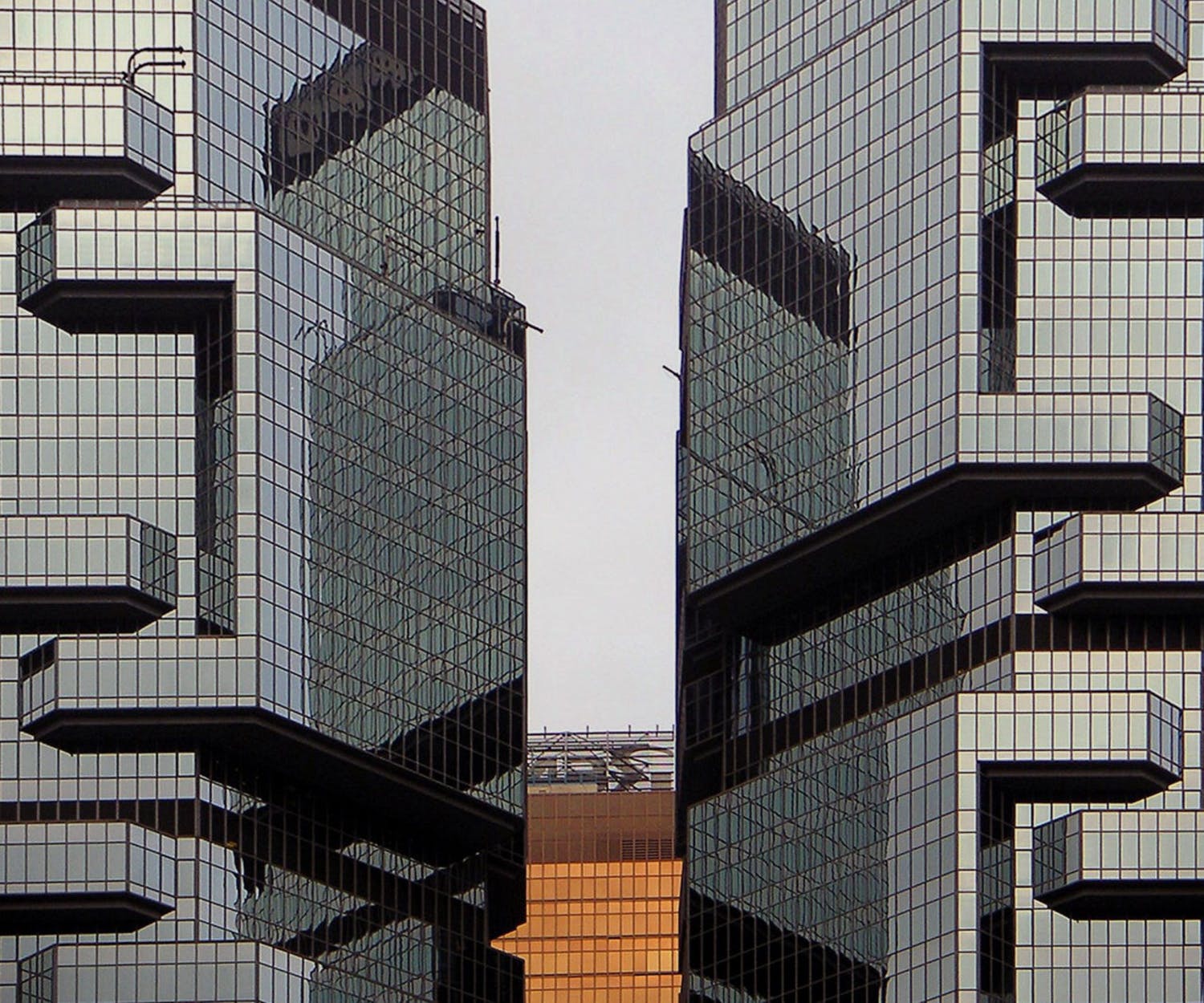
Paul Rudolph “Bond Centre” 1984. Photographer unknown. Courtesy of The Paul Rudolph Heritage Foundation. Image via centerforarchitecture.org.
The Bond Center of The Paul Rudolph:
Bond Center (now Lippo Center) is not often discussed as representative of Rudolph’s larger body of work. However, it may be as brutalist as his Orange County Government Center, or the Yale Art and Architecture Building. It is so brutal that it’s being built on a previous scheme’s poured-in foundation. The project was weaved into so many complexities in the site, the city, and the culture. The exhibition endows it a deserving chance to resurface to the American audience’s scrutiny.
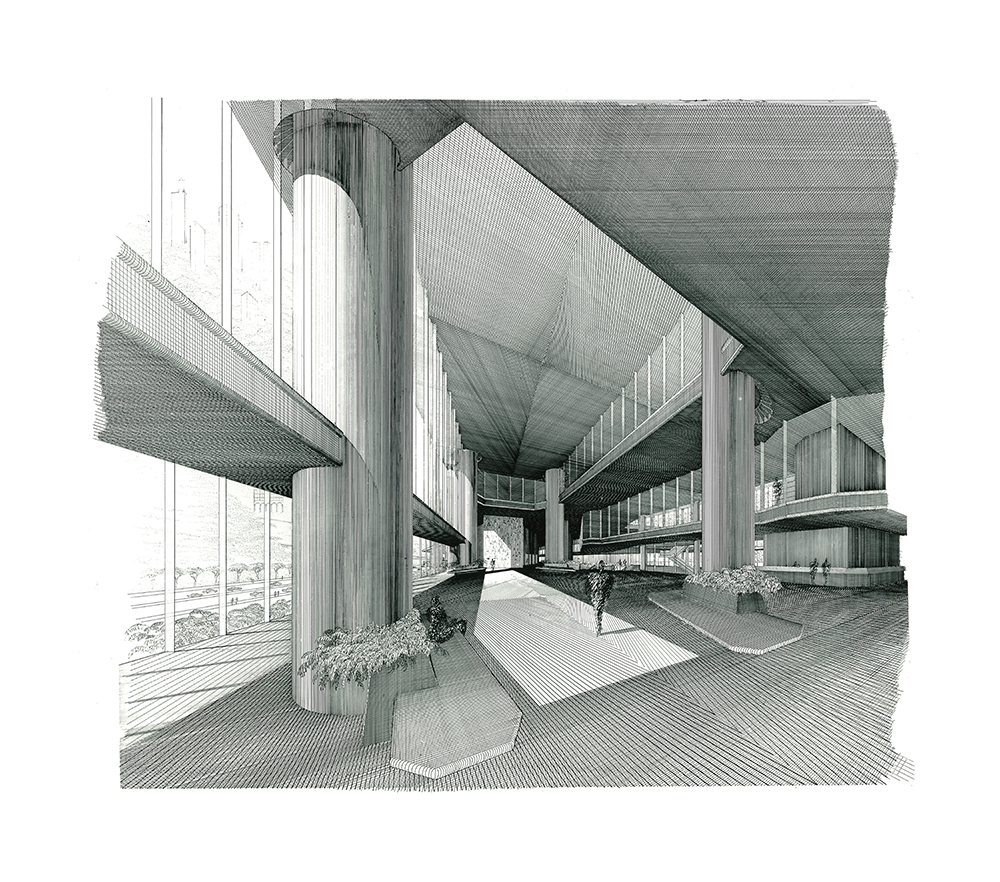
Bond Center sketches (Courtesy Center for Architecture and Paul Rudolph Heritage Foundation)
According to a Citylab article by Mark Byrnes, Bond Center, completed in 1988 in the Admiralty district (the central business district of Hong Kong), “emerged during an uneasy time in the city as the conditions of its transfer from British to Chinese rule were being negotiated.” Not only that, the building exchanged hands before and during Rudolph’s construction in the 80s, quickly following the “1983 financial panic.” However, it wasn’t able to stop Rudolph and his Western counterparts from building their visions in the city. By 1988, Bond Center sits proudly in the vicinity of I.M.Pei’s Bank of China tower(1990) and Norman Foster’s HSBC headquarters (1985).
Bond Center did not define Rudolph’s career in the same magnitude as HSBC building defined Foster’s, or BOC defined Pei’s. In a lecture by Nora Leung, author of 1990 hardcover Experiencing Bond Center, offered glimpses as to why. She empathized that Rudolph built under a tight budget, unlike the notorious budget of his British rival, among facing other constraints that limited creativity to reduced formal and material resolutions. Nonetheless, Leung admired his intuitions and hold dear his sketches for 30 years, retrieved from meetings and direct communications with the architect. His sketches are precious parts of Rudolph’s masterful storytelling in from the large scale of architectural massing, down to the small scale of detailing and material crafting.
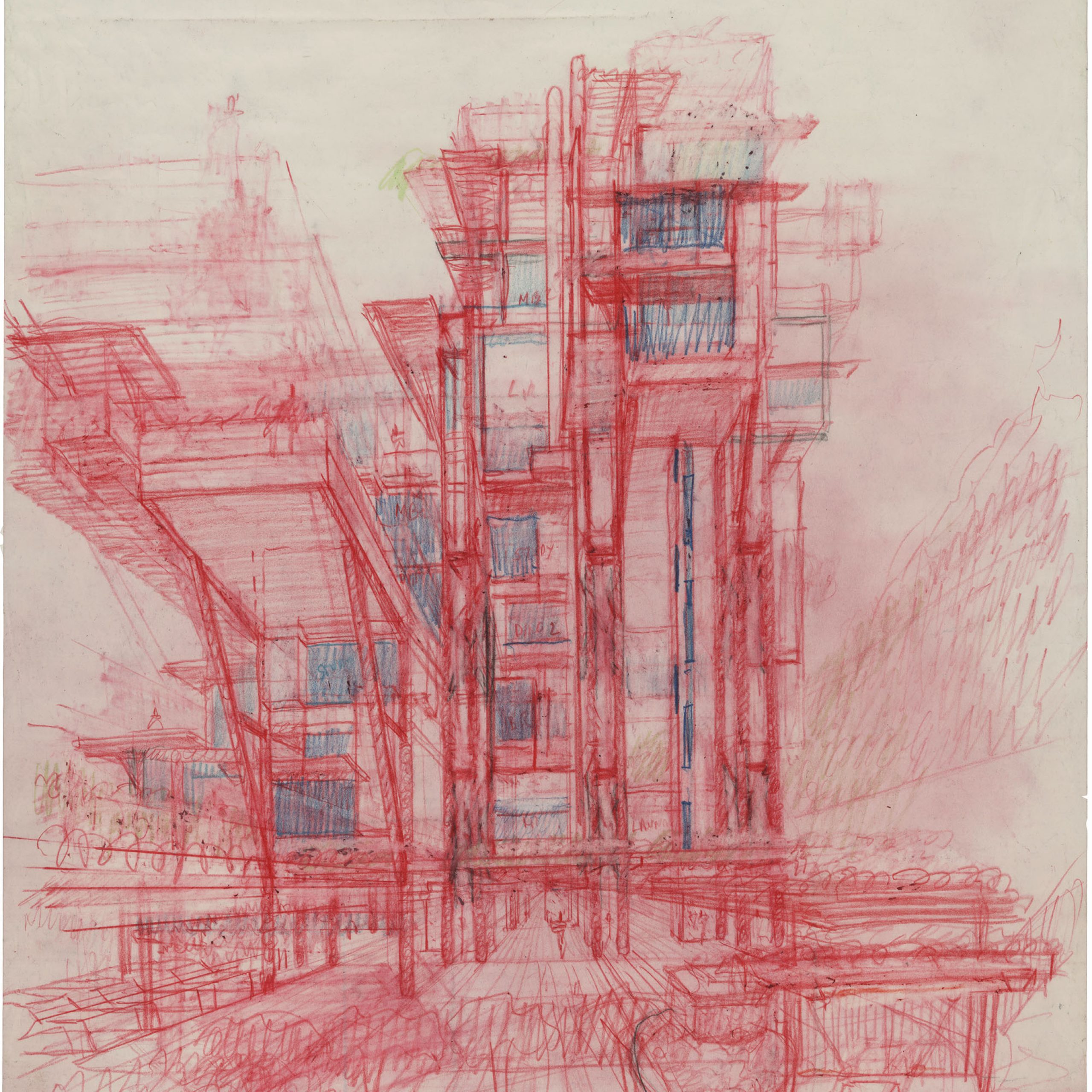
Plantation Road (Courtesy Center for Architecture and Paul Rudolph Heritage Foundation)
The curation is pleasingly straightforward- the exhibits belonging to their respective projects, namely Bond Center, “Sino Tower,” and Plantation Road mansion, include original and reproduced progress sketches, as well as Rudolph’s prized ink renderings. As the press release from Paul Rudolph Heritage Foundation puts it, the three designs “reflect considerations unique to the topography, scale, and climate of the territory.” But why Hong Kong? If curators at the Center wishes to focus on Rudolph’s Asia undertakings, Intiland Tower in Indonesia, The Colonnade and the Concourse in Singapore are arguably more illustrative of his Brutalist style, documented by photographer Darren Soh, and other scholars alike, amid this recent revival of Brutalism in especially the younger generation of architects.
In the opening speech of Roberto de Alba, author of Rudolph’s late work memoir, he crossed paths with Leung as Leung sent him an email to correct a mistake in his published book, and eventually collaborating with her on this exhibition to reintroduce Rudolph’s Hong Kong projects to New York City. I wish to believe there are other reasons for the exhibition’s focus aside from de Alba’s jokingly remark. As an occasional user of Bond Center in Hong Kong (at least the podium floors that are open to the public), I can rest assured that the building has laid such deep influences to its users, context, and city, thanks to its well-considered design and urban gesture. Perhaps there will be a future exhibition on Rudolph’s Jakartan expedition or Singaporean obsession, but the long-overdue look at Rudolph’s Hong Kong projects is definitely justified.




